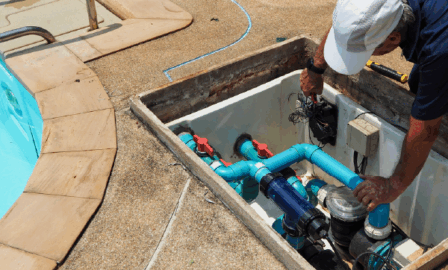Using Robotics as a Service to Increase Productivity in Warehouses
The last few decades have brought about technological advancements that changed the way we approach manufacturing and supply chain practices. Companies like Amazon and Nike have capitalized on advanced warehouse automation to lower costs by increasing productivity, reducing safety stock, and maximizing space utilization. Taking advantage of innovative technology is necessary to secure a competitive advantage in any industry, but standard, in-house automation systems may no longer be the best option for every company as Robotics as a Service (RaaS) take center stage.
What does the Robotics as a Service (RaaS) business model look like?
RaaS is a fast emerging industry inspired by Software as a Service. The market is expected to hit $34.7 billion by 2022 with a CAGR of 23.9%. RaaS companies operate on a subscription-based model, with clients selecting a package that meets their warehouse needs. The goal is to turn a substantial up-front cost that often acts as a significant barrier to entry into a more manageable variable cost that can be scaled up or down with ease.
Robotics as a Service companies can equip your warehouse with autonomous robotic systems that meet personalized needs, including conveyer systems, box pickers, and heavy payload transporters. Subscriptions generally include set up and configuration, logistics management, troubleshooting, and the ability to change the system to meet dynamic warehouse requirements.
The key selling point for subscription services like RaaS is the fact that they can be test driven with far less expense than if the robots were purchased outright, and the service can be cancelled at any time. These points are what make RaaS so conducive to the requirements of 4th wave industry, and they provide a compelling argument for leaving in-house automation in the past.
How can these robots improve your supply chain operations?
Test Drive and Scale Quickly
RaaS systems can be set up and functional within a couple weeks, according to Melonee Wise, CEO of Fetch Robotics. Traditional robotic systems can take more than 18 months to implement, a time frame that is hardly compatible with the fast pace of modern industry. With RaaS, a pilot can be up and running within a month, and decisions can be made on whether to scale up, down, or consider another path entirely. This flexibility is critical, as many firms do not have the time or resources to devote months on end to testing new technology.
For example, inVia’s picker robots can be integrated directly into your warehouse’s existing infrastructure to grab and transport payloads. Many RaaS picking robots specialize in reading existing barcode labels and collecting/transporting boxes and pallets that warehouses already use. As warehouses grow or reduce in size, so can your robot fleet. No matter the current warehouse environment, RaaS companies can run simulations to optimize efficiency and space allocation.
Improve Warehouse Worker Experience
Implementing an automation strategy can vastly improve warehouse safety. OSHA reports that over 11% of forklifts will be involved in some kind of accident, so implementing autonomous machinery that responds in real time to the operating environment can greatly increase the safety of difficult tasks prone to human error.
These robots are designed to supplement the work warehouse employees are already doing. The U.S. is facing a labor shortage, so RaaS can be employed on a flexible basis to fill labor gaps in the warehouse, particularly during the busy holiday season when consumer products firms struggle to staff their facilities.
Automation can skyrocket productivity, resulting in facility and work force expansion paired with significant upskilling and reskilling that can allow workers to focus on higher level tasks along with managing the robots on the production line.
Final word on Robotics as a Service vs. in-house automation systems
The RaaS model allows for an unparalleled amount of flexibility in warehouse operations. As technology continues to develop, industry evolution accelerates. Firms are more likely to pivot their business model to keep up with trends, demand, and competition than ever before, increasing the threat of sunk costs incurred from capital investment that falls to the wayside. For consumer products companies without a solid long-term plan, taking advantage of RaaS will be essential for accelerating the supply chain in the most cost-effective way possible.
For companies that have a more stable business model and product mix, and the resources to make a substantial fixed cost capital investment, in-house automation is still a very viable option. In-house systems provide a level of specialization to the product and facility that RaaS options have yet to achieve. Once a return on investment has been recouped, these systems are marvelous at catering to a firm’s individualized needs. However, achieving that return on investment is no simple task, and this is what makes RaaS options so appealing to small or mid-sized companies looking to break into the world of autonomous machinery.



